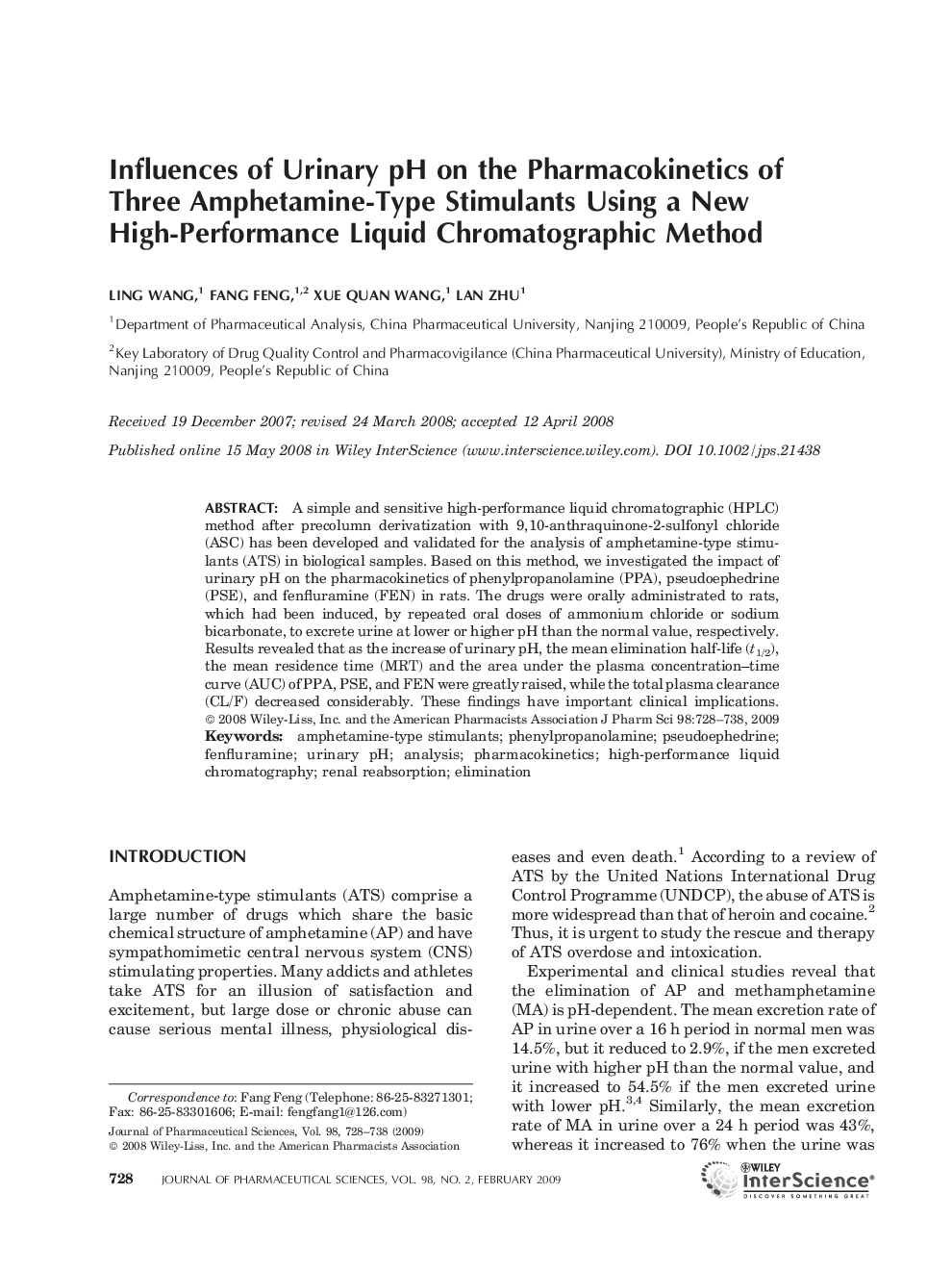| Article ID | Journal | Published Year | Pages | File Type |
|---|---|---|---|---|
| 2487144 | Journal of Pharmaceutical Sciences | 2009 | 11 Pages |
Abstract
A simple and sensitive highâperformance liquid chromatographic (HPLC) method after precolumn derivatization with 9,10âanthraquinoneâ2âsulfonyl chloride (ASC) has been developed and validated for the analysis of amphetamineâtype stimulants (ATS) in biological samples. Based on this method, we investigated the impact of urinary pH on the pharmacokinetics of phenylpropanolamine (PPA), pseudoephedrine (PSE), and fenfluramine (FEN) in rats. The drugs were orally administrated to rats, which had been induced, by repeated oral doses of ammonium chloride or sodium bicarbonate, to excrete urine at lower or higher pH than the normal value, respectively. Results revealed that as the increase of urinary pH, the mean elimination halfâlife (t1/2), the mean residence time (MRT) and the area under the plasma concentration-time curve (AUC) of PPA, PSE, and FEN were greatly raised, while the total plasma clearance (CL/F) decreased considerably. These findings have important clinical implications. © 2008 WileyâLiss, Inc. and the American Pharmacists Association J Pharm Sci 98:728-738, 2009
Keywords
Related Topics
Health Sciences
Pharmacology, Toxicology and Pharmaceutical Science
Drug Discovery
Authors
Ling Wang, Fang Feng, Xue Quan Wang, Lan Zhu,
